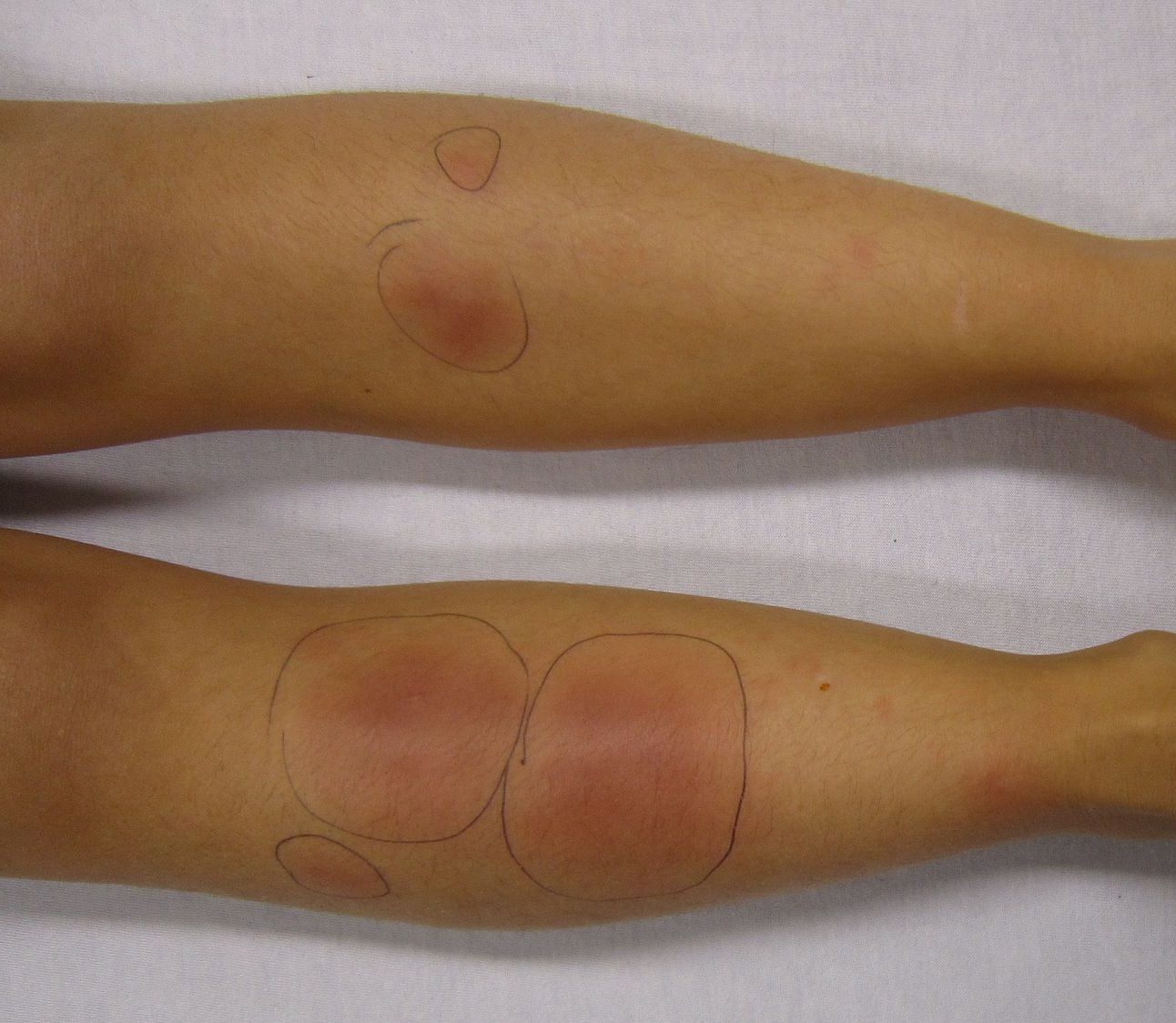 Erythema Nodosum is an inflammatory condition that happens deep underneath the skin, within the subcutaneous fatty layer. It is a somewhat rare condition that can affect both men and women between the ages of 20 – 40.
Erythema Nodosum is an inflammatory condition that happens deep underneath the skin, within the subcutaneous fatty layer. It is a somewhat rare condition that can affect both men and women between the ages of 20 – 40.
“It typically appears as painful lumps, otherwise known as nodules, that are red and tender to the touch,” explains Dr. Adam Mamelak, a board certified Dermatologist at Sanova Dermatology in Austin, Texas. In the beginning, they are raised, but over time can flatten and appear to look like bruises. These nodules are located on the lower legs, beneath the knees and can cover the entire shin and sides of the calves. Flu-like symptoms can sometimes occur, though it is likely that the nodules will be the only sign of the disorder.
The causes for Erythema Nodosum can vary. “Certain medications, fungal diseases, inflammatory bowel diseases, Strep infections, as well as other medical conditions can cause these nodules to appear,” Dr. Mamelak shares. “Though in some cases, no underlying causes for the condition can be identified.”
Many dermatologists can diagnose Erythema Nodosum just by looking at the skin and performing a physical exam, as it has a very specific appearance. Although, a skin biopsy where a tissue sample is taken and examined under the microscope may be necessary to assure that it is not something else.
Once firmly diagnosed, treatment may follow. Though the Erythema Nodosum skin lesions usually go away on its own, bed rest, painkillers, cool compresses, and elevating the legs when resting can ease the pain and discomfort that can come with these nodules. Your doctor may prescribe steroids or anti-inflammatory drugs to assist in the healing process. Looking for other symptoms and treating the underlying condition that may be causing the Erythema Nodosum is important and can assure that it does not return.
Contact Us
For more information on Erythema Nodosum, please contact us at Sanova Dermatology today.
Photo credit: (1) James Heilman, MD
